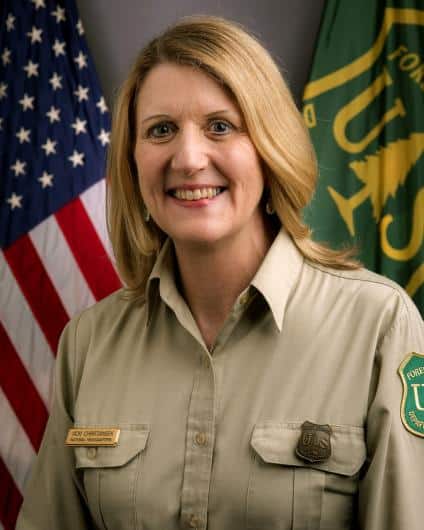The Washington Post recently ran this story:
“A Colorado resort area comes to the aid of a cash-strapped national forest”
Excerpt:
“The visitor boom — while great for the local economy — is putting a strain on the public lands that are the reason people vacation, day-trip and retire to the Vail Valley. The cash-strapped U.S. Forest Service isn’t equipped to handle the more than 12 million people who come to the 2.3-million-acre White River National Forest each year.
“So Vail and other Eagle County governments are planning to set aside as much as $120,000 to pay for Forest Service employees to monitor trails and campgrounds and to enforce backcountry rules next summer.”
FWIW, the book I edited, 193 Million Acres: Toward a Healthier and More Resilient US Forest Service (recently published by the Society of American Foresters) includes two essays that address the problem, including one by our own Sharon Friedman:
“Wild and Free: Diverse Dispersed Recreation as the Forest Service’s Main Mission,” by Sharon Friedman
“Implementing Sustainable Recreation on the National Forest System: Aligning the Reality and Promise,” by Steven Selin
In addition, I suggest a potential solution in my introduction — excerpt below….
The book is on sale on the SAF web site, www.eforester.org/store (although it isn’t yet listed in SAF’s online store, you can find it by searching for “193 Million Acres”). Proceeds (if there are any after paying production costs), go to support SAF, a non-profit organization.
Steve
^^^^^^^^^^^^^^^^^^^^^^^^^^^^^^^^^^^^^
Excerpt from the introduction to 193 Million Acres:
Selin calls on Congress and the Forest Service to “provide a strategic, focused, financial investment” in the agency’s recreation program. The Forest Service’s Framework for Sustainable Recreation (FSR), released in 2010, did not include such an investment. “It is high time the agency did so now,” wrote Selin. It seems unlikely that Congress will provide sufficient funding for this kind of investment in recreation or for addressing other elements of the backlog Thompson mentions. Perhaps an increase in the agency’s ability to be creative and flexible is in order.
For example, a national forest with a large backlog of deferred recreation facility maintenance, given the freedom to develop a solution on its own, might use stewardship contracting of the sort Tholen and others write about. In forest-health projects, a stewardship contractor typically thins an overcrowded stand and uses some of the proceeds from selling the merchantable timber to pay for the removal of small trees and brush that have little or no value, or for other ecological restoration services. The emphasis is on ecological: projects that are not primarily intended to restore or improve ecological conditions or functions aren’t allowed. According to the Forest Service handbook, “construction of developed campgrounds” and “maintenance of non-haul roads not causing water quality degradation”—roads not primarily intended for transporting harvested timber—are not appropriate stewardship contracting activities.
What if every national forest had the freedom to develop a long-term stewardship or service contract under which an amount of timber is harvested each year to pay for some or all of the recreation and/or other infrastructure construction and maintenance planned for the following year, even if such work has no significant environmental benefit? Revenues might be deposited in a recreation or infrastructure maintenance fund; any surplus funds would be carried over to the following year, saved for a rainy day (including the effects of a flood after a particularly rainy day), or spent on other recreation- or transportation-related projects, such building a new campground or fixing potholes. Advice on such expenditures could be sought from the forest’s resource advisory committee (RAC), and RAC recommendations would carry a great deal of weight. Donations to such funds might come from corporations, nonprofit groups, and individuals; in her essay, Friedman suggests something similar in a discussion the importance of “friends of the forest” groups.





